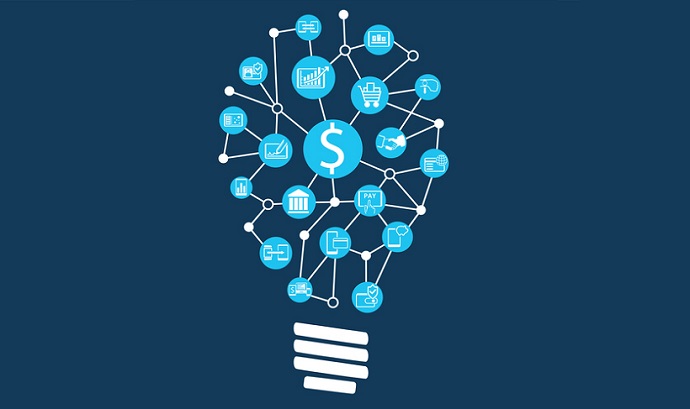Cross-Sector AI Partnerships Curb Hospital Readmissions
A cross-sector partnership leverages artificial intelligence to identify and reduce Geisinger’s unnecessary hospital readmissions.

Source: Thinkstock
Hospital readmissions are associated with billions of dollars in unnecessary healthcare costs. Over 3.3 million readmissions were associated with $41.3 billion in healthcare spending in 2011 alone.
As a result, readmission rates are a large focus of many value-based contracts. Even Medicare’s Hospital Readmissions Reduction Program penalizes acute-care hospitals with abnormally high readmission rates.
It’s beneficial for small and large health systems alike to understand the drivers behind these unnecessary readmissions and implement best practices to reduce them.
Geisinger is leveraging its large data sets to design artificial intelligence programs to do just that.
“We want to identify the context in which avoidable readmissions happen and figure out how to prevent them,” said David Vawdrey, PhD, chief data and informatics officer at Geisinger. “This not only has a financial benefit, but it’s better for everybody all the way around. Patients shouldn’t be in a hospital or a skilled nursing facility if they don’t need to be.”
Data is the first step to solving this problem, allowing analysts and data scientists to identify patients most likely to be readmitted and understand patterns.
“Geisinger has 25 plus years of electronic health record data from the same vendor which integrates tightly into our clinical workflow,” Vawdrey continued. “Data is the new currency of data science. Geisinger is a treasure trove of that information.”
However, EHR data does not tell the complete picture of the patient. Patient records often lack important information or contain inconsistencies that can impact care delivery.
“More data doesn’t always mean better. We’ve focused a lot on how we can improve the quality of the data that we’re dealing with or at least understand more clearly what the limitations are of the data sets that we’re using,” Vawdrey said.
The growth of non-traditional data has skyrocketed in recent years with the increased focus on social determinants of health. Integrating this data with traditional claims and EHR information helps providers have a more holistic view of their patients.
“Bringing to bear all of these data sources is going to be a really important piece of the puzzle,” Vawdrey emphasized. “Fundamentally, there has to be some type of intervention. It becomes a sociological, behavioral economics, and psychology exercise to some extent as well. We were just scratching the surface in our potential to improve in an important, ethical, responsible, and helpful way.”
The larger and more robust the dataset, the better it is for informing artificial intelligence solutions.
CMS’ recent AI Health Outcomes Challenge highlights this point.
“The overarching objective that CMS articulated in the challenge is to leverage claims data along with other publicly available data sources to build models that can help improve, identify, and reduce adverse health events,” Vawdrey explained.
Geisinger partnered with Medial EarlySign to develop a machine learning technique for early disease detection. The cross-sector partnership was recently named a Stage 1 finalist in the AI Health Outcomes Challenge.
The project, titled ‘Reducing Adverse Events and Avoidable Hospital Readmissions by Empowering Clinicians and Patients,’ will use machine learning algorithms that predict unplanned hospital and skilled nursing facility admissions within 30 days of discharge.
“We’re trying to identify and predict who is most susceptible and what interventions might be able to prevent unwanted outcomes,” elaborated Vawdrey.
While Geisinger has internal data scientists and analysts who could develop these tools independently, they leaned on cross-sector partnerships because they realized they did not know it all, Vawdrey said.
“We’re not only trying to do transformational things, but we’re trying to prove rigorously to ourselves and the broader community that these types of interventions work. We’re trying to pave the trail for others to be able to do similar things,” he furthered. “We don’t have all the answers.”
The partnership’s work will highlight two key questions that aim to eliminate some of artificial intelligence’s most common problems. Making artificial intelligence explainable requires answering ‘but why?’ and ‘what if?’
Artificial intelligence is often critiqued for being a black box. The algorithms spit out solutions to complex medical problems with little explanation as to how it came to that conclusion.
‘But why?’ helps eliminate the black box challenge and understand why an algorithm gives the results that it does.
‘What if?’ explains the different levers associated with the algorithm's output. What if one lever is moved, how will the outcome change? Vawdrey questioned.
Understanding how different variables in the algorithm can change the outcome eliminates the black box problem and helps understand the critical factors used in clinical decision making.
The black box can be a red herring, though, Vawdrey argued.
“We need to move as an industry rather than to just throw up this nebulous concern that it’s an opaque or black box,” he continued. “We don’t know how it works. There’s a lot of things that we don’t know how they work in healthcare.”
Many physicians and radiologists do not understand the complex physics behind how an MRI scan works, yet the results the machine produces are trusted and used to make complex medical decisions, Vawdrey explained.
AI should be thought of similarly, he argued. Just because the result is not explainable does not mean they aren’t useful.
Eliminating the mystique of artificial intelligence’s decision making will improve provider’s comfort with integrating the tool into routine clinical practice.
Investing in artificial intelligence solutions means Geisinger is not investing in other opportunities.
“There’s an opportunity cost to everything that we do. We want to find the biggest bang for the buck, so to speak,” Vawdrey noted.
Participating in CMS’ AI Health Outcomes Challenge and forming cross-sector partnerships to solve common AI challenges articulates Geisinger’s commitment to finding solutions. Only through scientific study can Geisinger prove the tool’s cost savings and positive impact on patients.
